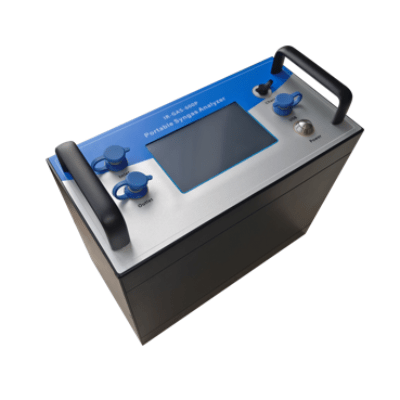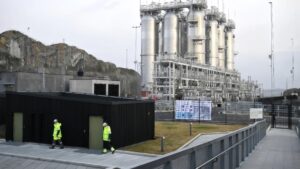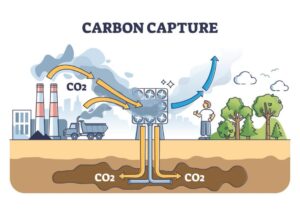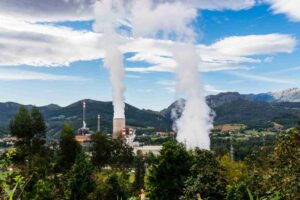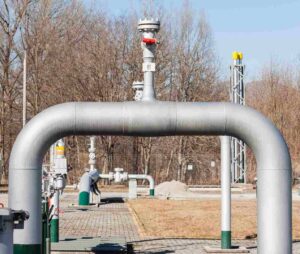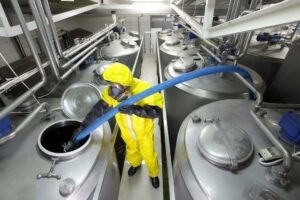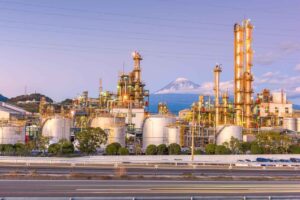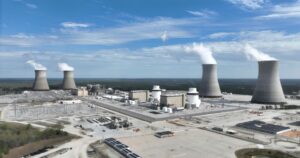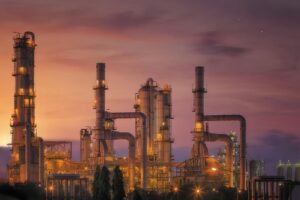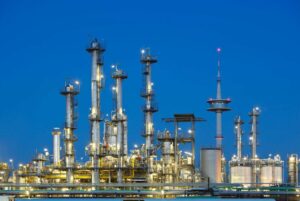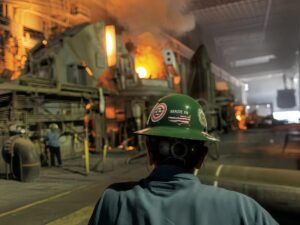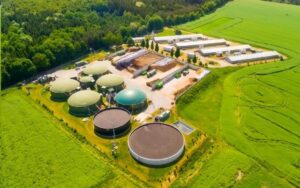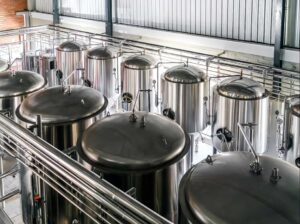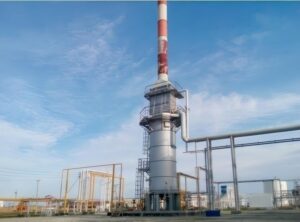Uncontrolled CO₂ buildup in fermentation tanks can compromise product quality—ESEGAS provides a solution.
Precise and continuous CO₂ measurement in fermentation tanks ensures optimized microbial activity, prevents overpressurization, and maintains ideal environmental conditions.

While this may answer the immediate “why”, understanding how CO₂ gas analyzers work—and how ESEGAS ensures their reliability—can further improve fermentation control and productivity.
Why Is CO₂ Crucial in Fermentation Processes?
In fermentation, carbon dioxide (CO₂) is not just a byproduct—it is a vital indicator of microbial health and metabolic activity. Whether the process involves yeast in alcoholic fermentation, bacteria in lactic acid production, or complex microbial consortia in biopharmaceuticals, CO₂ evolution reflects real-time biological dynamics. However, CO₂ buildup can also pose serious risks. Elevated concentrations may lead to excessive internal pressure in closed fermentation tanks, cause foam overflow, reduce dissolved oxygen levels, or even signal stalled or incomplete fermentation.
These fluctuations in CO₂ production can go unnoticed without proper monitoring. Operators relying on periodic sampling or estimations risk product inconsistencies, longer batch cycles, or failed fermentation runs. In industrial settings such as breweries, bioethanol plants, or pharmaceutical fermentation, even slight deviations in CO₂ levels can translate into significant losses—economically and in terms of quality assurance.
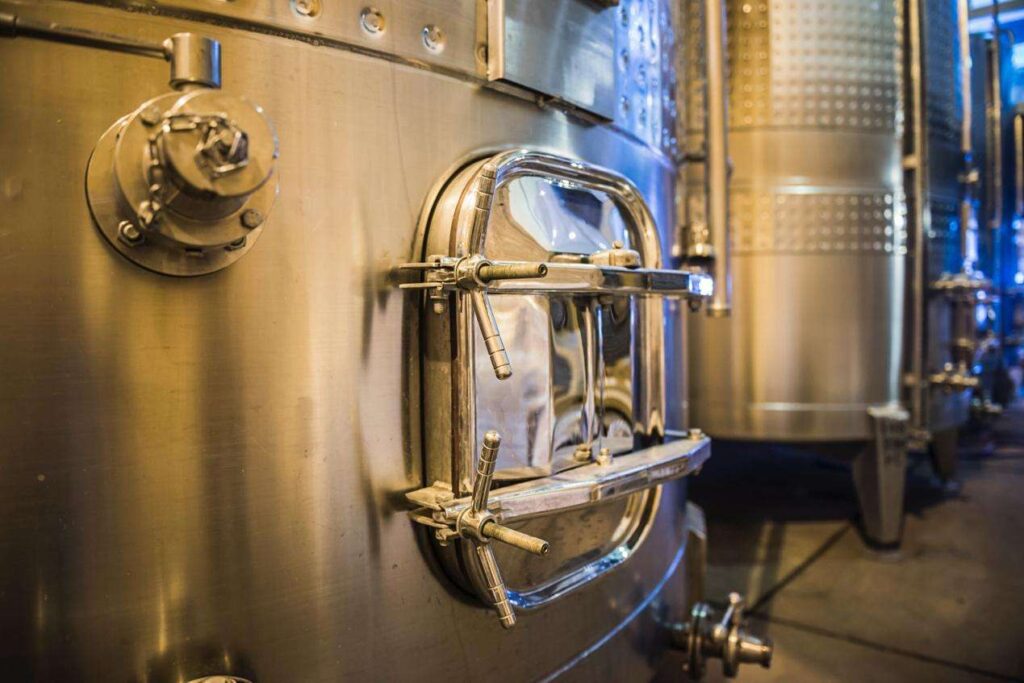
Continuous CO₂ monitoring, made possible with high-precision gas analyzers from ESEGAS, turns this variable into a powerful diagnostic tool. By measuring CO₂ output in real time, operators gain insights into microbial activity curves, substrate consumption rates, and the exact fermentation phase. This data allows for proactive control—adjusting parameters like temperature, pH, aeration, or nutrient feed—to maintain ideal biological conditions. Moreover, monitoring CO₂ also serves as a safety mechanism: early detection of abnormal accumulation helps prevent overpressurization, which can damage tanks or require costly downtime.
ESEGAS analyzers are specifically designed for such high-demand fermentation environments. With rugged construction and sensitive detection capabilities, they deliver accurate, stable measurements even in high-humidity or ethanol-laden headspaces. By integrating these instruments into the fermentation system, manufacturers ensure each batch follows an optimal, repeatable pathway—improving consistency, yield, and regulatory compliance.
In short, CO₂ is not just a sign of fermentation—it is the voice of the process. With ESEGAS, that voice becomes clear, measurable, and actionable.
How Does a CO₂ Gas Analyzer Detect CO₂ in Fermentation Tanks?
Fermentation processes are highly dynamic. The CO₂ concentration in a fermentation tank can rise rapidly due to microbial metabolism, or drop just as quickly due to environmental shifts, process failure, or end-of-phase transitions. Traditional methods of monitoring—such as manual sampling or using non-dedicated sensors—often fail to provide the required speed, accuracy, or continuity. These outdated approaches are prone to delays, data loss, and contamination risks, all of which can compromise product quality and production efficiency.
Especially in industrial fermentation (e.g., beer brewing, biopharmaceuticals, food additives), precise control of CO₂levels is not optional—it’s essential. Analyzers must function in high-moisture, high-CO₂, and sometimes chemically aggressive environments. Additionally, the integration of sensor data with SCADA or PLC systems for process automation requires dependable, real-time measurements that can withstand long operational cycles. This is where many generic gas sensors fall short.
Advanced CO₂ Detection with ESEGAS Technology: ESEGAS CO₂ gas analyzers are specifically designed to meet the rigorous demands of fermentation monitoring. They utilize cutting-edge sensing technologies and engineering features to ensure accurate, stable, and continuous CO₂detection, even in the harshest tank environments.
Here’s how they work:
1. NDIR (Non-Dispersive Infrared) Detection Principle
This is the core technology behind most ESEGAS fermentation-grade CO₂ analyzers. The principle relies on CO₂molecules’ specific ability to absorb infrared (IR) light at a known wavelength.
- Infrared Source: The analyzer emits IR radiation through the sampling chamber.
- Absorption: As CO₂ molecules pass through the chamber, they absorb a portion of the IR light.
- Detector Response: A photodetector measures the remaining IR light. The difference correlates directly to the CO₂ concentration.
- Advantages: NDIR is highly selective for CO₂, non-consumptive, and delivers rapid, repeatable results even at varying gas pressures and humidity.
2. Sample Handling Methods: Inline or Extractive
Depending on the fermentation setup, ESEGAS analyzers offer two sampling configurations:
- Inline (In-situ) Measurement: The sensor is installed directly into the exhaust line or tank headspace. This allows real-time data without sample transfer, reducing maintenance.
- Extractive Sampling: A small sample is continuously pulled from the tank into the analyzer, often through a gas conditioning system (moisture removal, filters). This is ideal for sterile or high-foam environments.
Both methods maintain integrity and accuracy in high-humidity, ethanol-rich atmospheres, which are common in active fermentation systems.
3. Environmental Conditioning and Protection
ESEGAS analyzers come equipped with features designed for fermentation-specific challenges:
- Condensation-resistant optics to prevent signal drift in humid conditions
- Corrosion-proof enclosures and fittings (e.g., stainless steel or PTFE)
- Self-calibration routines that ensure long-term stability and reduce service frequency
- Optional heated sample paths to prevent clogging or condensation in cold-line setups
These features make ESEGAS devices accurate, durable, and low-maintenance, even during long fermentation cycles.
4. Digital Integration and Output Options
To support process automation and data logging, ESEGAS analyzers are equipped with:
- Analog (4–20 mA) and Digital Outputs (RS485, Modbus RTU)
- Alarm functions for high or low CO₂ thresholds
- Optional data loggers or cloud integration for remote monitoring and batch traceability
- Fast response time (<5 seconds) suitable for control loop feedback
These outputs make integration into fermentation control systems (SCADA/PLC) straightforward and flexible.
5. Calibration and Compliance
- ESEGAS provides analyzers with factory calibration certificates traceable to international standards.
- Optional automatic calibration modules are available for long-term installations.
- The devices support GMP, HACCP, and ISO production environments, making them ideal for pharmaceutical and food-grade fermentation applications.
In summary, ESEGAS CO₂ gas analyzers combine precision infrared sensing, robust hardware, and intelligent integration features to deliver unparalleled accuracy and reliability in fermentation monitoring. From maintaining microbial balance to triggering real-time process adjustments, these analyzers transform CO₂ detection from a passive metric into an active tool for process optimization.
What Is the Impact of Real-Time CO₂ Monitoring on Fermentation?
In fermentation processes, timing is everything. Microbial growth and metabolite production follow precise biological phases—lag, exponential, stationary, and death. Missing the optimal point for temperature adjustment, aeration, or nutrient feeding by just a few hours can result in reduced yields, off-spec products, or wasted raw materials. Yet many fermentation systems still rely on time-based protocols or infrequent manual checks to gauge progress, ignoring the most immediate and revealing signal: CO₂ evolution.
Without real-time monitoring, operators face several risks:
- Delayed detection of fermentation stalls or overactivity
- Inability to adapt to biological variability across batches
- Increased need for manual sampling and lab analysis
- Missed opportunities to optimize production timelines
These limitations not only affect product quality but also drive up costs and reduce overall process efficiency.
Fermentation is no longer a black box—it can be a transparent, data-driven process. But this shift requires continuous access to reliable, real-time indicators. CO₂ is the most accessible and responsive metric of microbial respiration, yet without proper sensing technology, it remains underutilized. This is especially problematic in industries with high production volume or tight regulatory standards, such as biopharma, food biotechnology, and alcoholic beverages.
Solution: Transforming Fermentation with Real-Time CO₂ Data from ESEGAS
With ESEGAS CO₂ gas analyzers, fermentation facilities unlock a new level of control and insight by continuously tracking CO₂ emissions with second-by-second precision. This transforms CO₂ from a lagging indicator into a proactive process control tool.
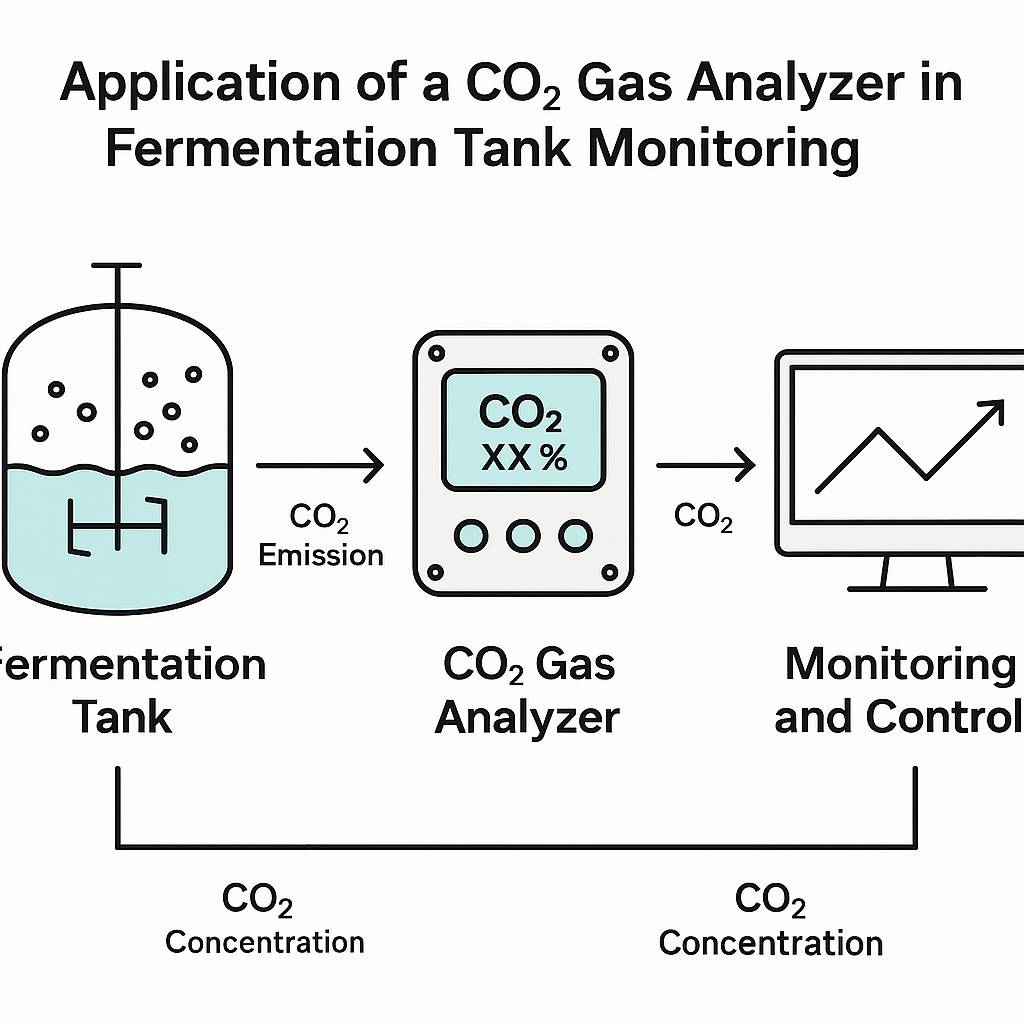
Here’s how real-time monitoring impacts fermentation outcomes:
1. Enhanced Process Control
- Dynamic feedback: ESEGAS analyzers provide live CO₂ data that can be used to automate controls for aeration, agitation speed, or feed rates.
- Phase detection: By mapping CO₂ trends, systems can detect transitions between fermentation phases—ensuring interventions happen at the right time.
- Adaptive tuning: Operators can adjust environmental conditions on the fly to match real-time biological activity, increasing process responsiveness.
2. Improved Product Consistency
- Batch-to-batch reproducibility: With continuous CO₂ tracking, fermentation cycles become more predictable and standardized, reducing variation.
- Reduced risk of contamination or underperformance: Sudden drops in CO₂ often signal microbial death or contamination, which can now be caught early.
- Data-driven decision-making: Historical CO₂ profiles can inform SOP adjustments and training, supporting a culture of continuous improvement.
3. Reduced Operational Costs
- Minimized manual labor: Automated monitoring cuts down on routine sampling and analysis time.
- Shortened cycle times: Real-time data allows early termination of fermentation when endpoint conditions are met—no need to “play it safe” and extend unnecessarily.
- Lower energy usage: Dynamic control of aeration or agitation based on actual CO₂ activity reduces energy waste.
4. Regulatory and Quality Benefits
- Traceable data logs: ESEGAS analyzers can store or transmit CO₂ data continuously, supporting compliance with FDA, GMP, or ISO standards.
- Audit-ready reports: Integrated data outputs make it easy to generate reports for quality control or certification audits.
5. Early Warning System for Process Deviations
- Real-time alerts: Set thresholds for high or low CO₂ to detect overpressurization, stalled fermentation, or abnormal activity instantly.
- Preventative maintenance cues: A sudden drop in expected CO₂ may indicate mechanical or biological issues—prompting early intervention before failure occurs.
| Impact Area | Challenge Without Monitoring | Solution with Real-Time Monitoring via ESEGAS | Benefits |
| Process Control | Time-based control ignores microbial variability | Live CO₂ feedback enables dynamic adjustments in aeration, temperature, and feeding | Optimized fermentation timing, reduced error margins |
| Phase Detection | Manual checks may miss critical phase transitions | Real-time CO₂ profiles clearly indicate lag, exponential, and stationary phases | Increased accuracy in intervention timing |
| Product Consistency | High batch-to-batch variability due to uncontrolled environments | Continuous monitoring ensures reproducible microbial conditions | Improved product quality and yield reliability |
| Contamination & Deviation | Delayed detection of microbial death, contamination, or nutrient imbalance | Sudden drops or spikes in CO₂ serve as instant alarms | Early intervention prevents batch loss |
| Operational Efficiency | Excessive manual sampling, energy waste, and extended cycle times | Automated control and phase-aware shutdown based on CO₂ data | Lower labor, shorter cycles, reduced utility costs |
| Regulatory Compliance | Lack of traceability in manual logs | Integrated data logging and real-time output for audits and GMP/ISO compliance | Streamlined documentation, audit readiness |
| Preventive Maintenance | Mechanical issues often discovered too late | Abnormal CO₂ readings can indicate sensor fouling, pump failures, or system leaks | Reduced downtime, early maintenance scheduling |
| Automation Integration | Difficult to integrate generic sensors into SCADA/PLC systems | ESEGAS analyzers support Modbus, RS485, and 4–20 mA outputs | Seamless integration into automated fermentation platforms |
In essence, real-time CO₂ monitoring with ESEGAS turns fermentation from a reactive process into a proactive one. It enables manufacturers to respond to biological changes as they happen, not hours later, leading to faster, safer, and more consistent production cycles. The value is not just in better numbers, but in better decisions, made at the right time.
Conclusion
CO₂ monitoring is a vital part of fermentation control. With ESEGAS CO₂ gas analyzers, industries gain reliable, real-time data to optimize microbial activity, ensure safety, and improve production consistency.
If you want to know more details, contact with us please!




